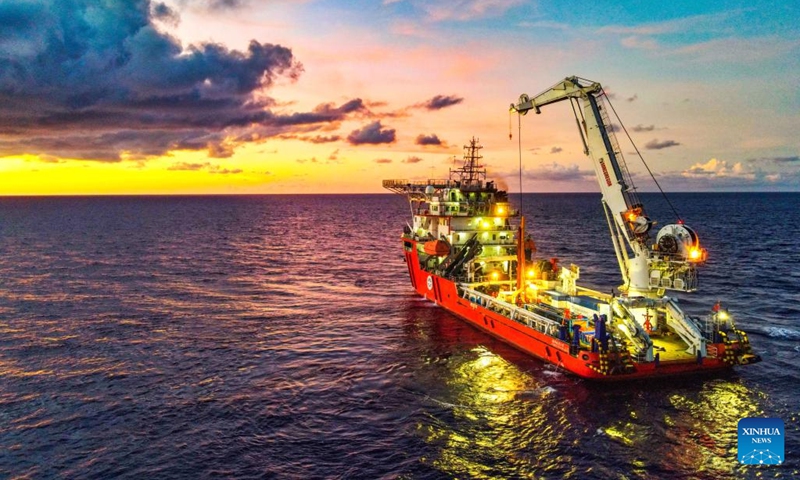
This photo taken on July 23, 2023 shows an ocean thermal energy electricity generation device aboard Haiyang Dizhi-2, or literally Ocean Geology 2, conducting preparations for an offshore test.(Photo: Xinhua)

This photo taken on July 23, 2023 shows an ocean thermal energy electricity generation device aboard Haiyang Dizhi-2, or literally Ocean Geology 2, conducting preparations for an offshore test.(Photo: Xinhua)
Chinese scientists and engineers have completed an offshore test of an ocean thermal energy electricity generation device in the South China Sea.
The 20 kW device, developed chiefly by the Guangzhou Marine Geological Survey (GMGS) under direct control of the China Geological Survey, was returned to Guangzhou, capital city of the southern Guangdong Province, after the test was completed.
During the test, the device generated electricity for four hours and 47 minutes, reaching a maximum power output of 16.4 kW.
"This offshore test verified the theoretical viability of the indigenously-developed ocean thermal energy power generation system, as well as its practicability, marking a crucial step in China's journey to develop and harness ocean thermal energy, from the land test stage to offshore applications," said Ning Bo, a senior engineer at the GMGS.
Ocean thermal energy harnesses temperature differences between the surface and deep seawater to generate electricity, thus being a source of renewable energy. According to Ning, China is rich in ocean thermal energy reserves, but relevant research had previously remained in the laboratory and land test stage.
